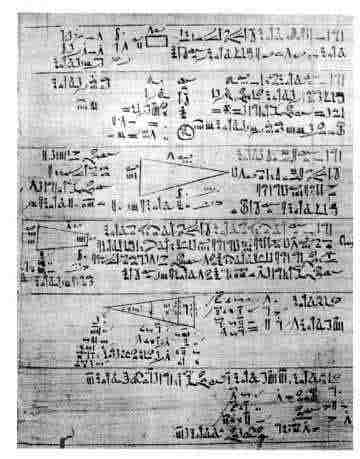Mathematical Works
Luca Pacioli was an Italian mathematician born somewhere in between the years 1445 and 1447, and died in 1517. Some call him the father of accounting but that wasn’t all he contributed to. Throughout his life he wrote a number of books that dealt with a somewhat wide range of topics. One of the first books he wrote was Tractatus mathematicus ad discipulos perusinos (Mathematics for Perugian Pupils) and it contained 16 sections on merchant arithmetic; things like profit, exchange barter mixing metals and algebra. He dedicated the book to his students at the University that he worked at from 1477 to 1480. He also wrote a textbook Summa de arithmetica, geometria, proportioni et proportionalità (Everything about Arithmetic, Geometry, and Proportions) that was used for schools in Northern Italy that consisted of a compilation of mathematical knowledge of his time and was the first printed work on algebra written in the vernacular, which was the spoken language of the day. It was also the book for which he was named the father of accounting for because it contained the first published description of bookkeeping called the double-entry accounting system. In one of his books De divina proportione the subject was mathematical and artistic proportion, along with the golden ratio and its application in architecture. This is the book that contains illustrations from Leonardo da Vinci.
“Leonardo da Vinci drew the illustrations of the regular solids in De Divina Proportione while he lived with and took mathematics lessons from Pacioli. Leonardo's drawings are probably the first illustrations of skeletonic solids, which allowed an easy distinction between front and back.”
Mathematics and Magic
Pacioli wrote a book called De viribus quantitatis (On The Powers Of Numbers) written between 1496 and 1508 that contains the first reference to card tricks, how to eat fire, how to juggle, solve puzzles etc. The book is divided into three sections: puzzles and tricks, mathematical problems, and a collection of proverbs and verses. In the book it also states that Leonardo de Vinci was left-handed. Unfortunately this work was never published and stayed in the archives of the University of Bologna until a mathematician came across a reference to it that was in a 19th century manuscript and it was finally published in 2007.
Mathematics and Chess
Pacioli also wrote an unpublished book about the game of chess De ludo scacchorum (On the Game of Chess). The manuscript was lost until 2006 when it was rediscovered in the library of Count Guglielmo Coronini, which contained 22,000-volumes of books. In the book are chess problems and chess pieces that scholars suspect that Leonardo da Vinci either drew or at the very least designed based on his long association with Pacioli.
 |
| Pictures from the manuscript De ludo scacchorum http://digitaljournal.com/article/250880 |

If you would like to know more details about the manuscript and what it contained here is a link to an article that I thought was interesting. http://www.nytimes.com/2008/04/18/arts/18iht-leo.1.12127016.html
Things like Pacioli's works that were lost for hundreds of years being recently found, kind of gives perspective on how many more documents and manuscripts there are yet to be unearthed.
List of sites that were used to help create the written portion of this blog:
http://en.wikipedia.org/wiki/Luca_Pacioli#Mathematics
http://www.gap-system.org/~history/Biographies/Pacioli.html
http://www.codicesillustres.com/catalogue/de_divina_proportione/index.html







 2 =
2 =  100 =
100 =  1,000 =
1,000 =  10,000 =
10,000 =  100,000 =
100,000 =  1,000,000 =
1,000,000 = 
 was used for the word 'part'. This means that r-10
was used for the word 'part'. This means that r-10  was used for the word 'side' or 'half' ½. The word 'hsb'
was used for the word 'side' or 'half' ½. The word 'hsb'  meant 'fraction', but it came to mean 'part-4' or ¼. 'rwy'
meant 'fraction', but it came to mean 'part-4' or ¼. 'rwy'  meant 'two parts out of three' 2/3, and 'khmt rw'
meant 'two parts out of three' 2/3, and 'khmt rw'  , though rare, was 'three parts out of four' 3/4.
, though rare, was 'three parts out of four' 3/4.